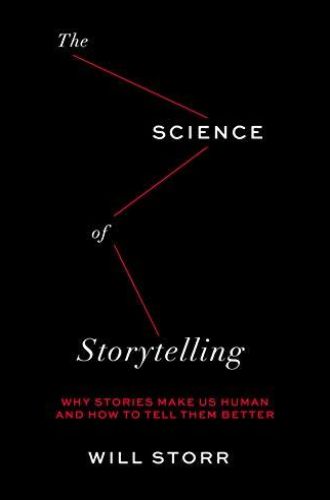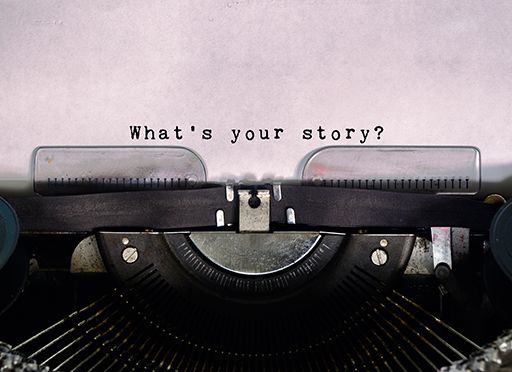Award-winning journalist Will Storr explains the myriad ways your brains fools you – all for your benefit – and why you so need and love stories.

Stories and Your Deceptive Brain
Award-winning journalist Will Storr also wrote Selfie, The Heretics and The Hunger and the Howling of Killian Lone. As expected from an experienced, acclaimed storyteller, Storr proves uniquely qualified to explain the power and value of narrative. He posits stories as the lingua franca of the mind, fundamental to the way people operate in the world. He examines how humans create reality in their stories. He suggests that – whether you realize it or not – you view your life as a narrative that you construct based on who you are at your core.
Storr sets out to inform and inspire writers and would-be writers in all forms. He addresses the psychological and even spiritual aspect of storytelling more than the scientific, but his title is only a handy hook on which to hang his complex appreciation for how story affects people’s emotions and mental processes. Hanging a rational framework onto such a mysterious journey is not an easy task, but Storr explores how story moves people and how everyone builds a world of stories for himself or herself. While not all of his framework holds up, Storr succeeds in creating a gripping narrative about how narrative grips you.
If the topic of narrative and human emotion intrigues you, other worthwhile books on the subject include The Storytelling Animal by Jonathan Gottschall and Lisa Cron’s Wired For Story.
Solve the Mystery
Your brain, Storr reveals, pieces together a coherent narrative from reality’s chaos, and that narrative stars you as the hero. This creates a sense of control that helps you avoid existential despair.
The only true plot fundamentals are that a story event on the surface triggers subconscious character change beneath.Will Storr
Storytellers create unexpected change to capture their main character’s attention and draw in readers or viewers. Wise writers, the author cautions, give audiences the minimal information necessary to excite their curiosity and compel them to complete the picture or solve the mystery themselves.
Life as Hallucination
Storr explains that humans can’t access objective reality; the brain creates a hallucination of external reality based on its perceptions and then fills in the gaps by telling itself stories which it regards as facts. In fact, the author explains, people hallucinate their reality in broad strokes – though they think it is entirely real – then adjust their perceptions after a closer look at a person, object or situation. The brain interprets this input and fills in details. Because readers model a writer’s world in their minds as they read, Storr teaches, the more specific the writer’s description is, the closer the reader’s version will mirror the writer’s.
Models
You “read” people’s faces to understand their thoughts and emotions. When you read a story, you imagine the characters’ minds. Yet, as Storr disappointingly unveils, in real life people aren’t very good at reading other people’s emotions and thoughts. They’re accurate only 35% of the time. The mistakes you make imagining others’ motivations and predicting their actions fuel life’s drama and comedy.
We’re wired to find selfless behavior heroic and selfish deeds evil. Selflessness is thought to be the universal basis of all human morality.Will Storr
The mind’s theories about other people and the world take the form of cause-and-effect stories. As Storr explains, the brain prefers – and seeks – cause and effect rather than a chain of “and then” events. He plays to his likely demographic when he reflects that people who prefer literary works and art-house films relish the ambiguous buildup of story.
Stories force characters to change and, as the reader, you want them to succeed. Thus, you become engaged by the empathy you feel for flawed protagonists. Storr once again offers bad news: Real life is more difficult than fiction, because your mind incorporates your flaws into your model of the world. You can’t perceive your flaws; they may seem like virtues to you. Personality acts on the world, and the “world pushes back in ways that reflect it,” creating a story told in a cycle of cause and effect.
Grand Narrative
Storr details how children come to realize that they want things, and that other people surround them who also want things. Children classify themselves by gender, class or other categories. But, by the time they reach adolescence, the author laments, this classification coalesces into a “grand narrative” of self that becomes more set and rigid, flaws and all, over time.
It’s hard to conceive of an effective story that doesn’t rely on some form of status movement to squeeze our primal emotions, seize our attention, drive our hatred or earn our empathy.Will Storr
Writers, Storr discloses, often build dramas around the opposing moral views of their hero and their villain. When reality challenges these characters’ internal models, their flaws appear. The experience slowly changes them, even as they try not to change.
Plot Emerges
Storr returns to a crucial theme when he explains that conflicting desires and feelings mean that people – and characters – remain mysterious even to themselves. Plot emerges as characters try, and fail, to control how the world challenges their core theories about life and about themselves.
In fiction, a character’s move from low to high status, or vice versa, shapes the audience’s feelings about him or her. Driven by their goals, Storr posits, people act like heroes going through a chain of “crisis, struggle and resolution” in their own stories. Pursuits make a life, and pursuits make plot lines.
Heroes and Villains
Echoing Joseph Campbell, Storr notes that heroes and villains appear in every culture’s myths. Religions, political ideologies and mission statements offer “ready-made theories of control” that their followers use to connect with their tribe or social environment and to gain higher status within it. Storr again explains people’s blindness to facts by describing how cultural narratives condition human beings to ignore stories that contradict their deeply held beliefs.
Change, Storr says simply, holds an audience’s attention. Story events cause change. Characters change subconsciously, and changes happen in you as you watch a plot play out and the characters’ goals change. Most characters resolve their dramatic question by facing their flaws and improving. The author explicates the nature of tragedy, in which characters won’t change while they persistently defend their flawed models of the world.
Slightly Disheartening
Storr makes a convincing case that you can’t really tell when you’re dead wrong, nor when you’re fabricating a world out of your wishes of how things should be. He shows that you’re not good at listening to people with whom you disagree and that you always view yourself as the hero of your own story, no matter your behavior. The brain, the author concludes, will always operate to spare you the truth. No wonder the smartest solution seems to be to stay home with a good book or a movie – a good story, though perhaps not your own.








